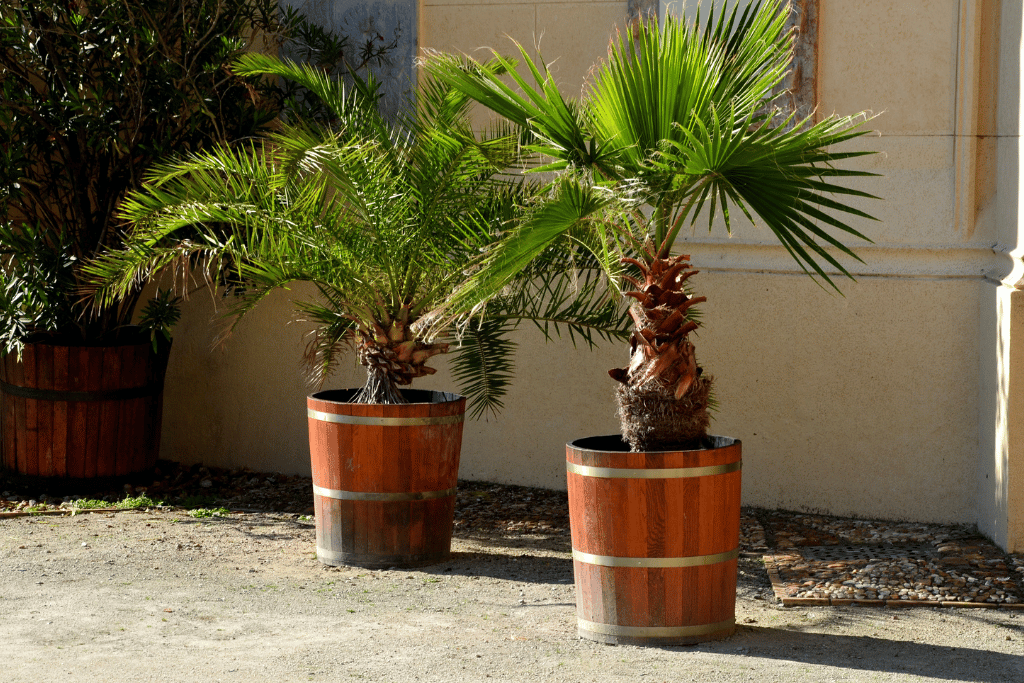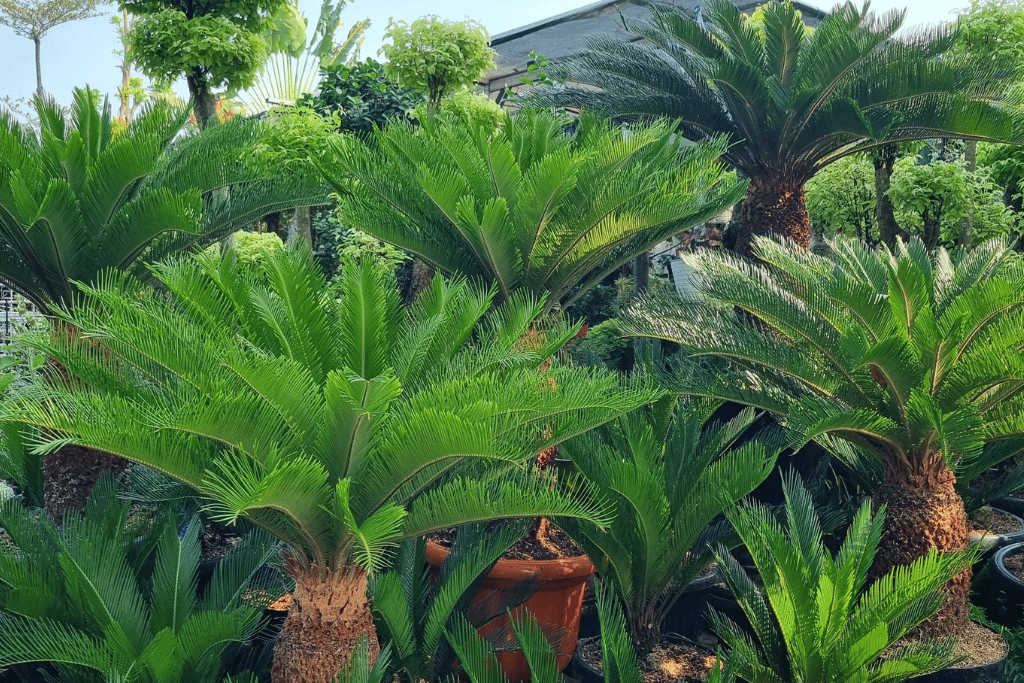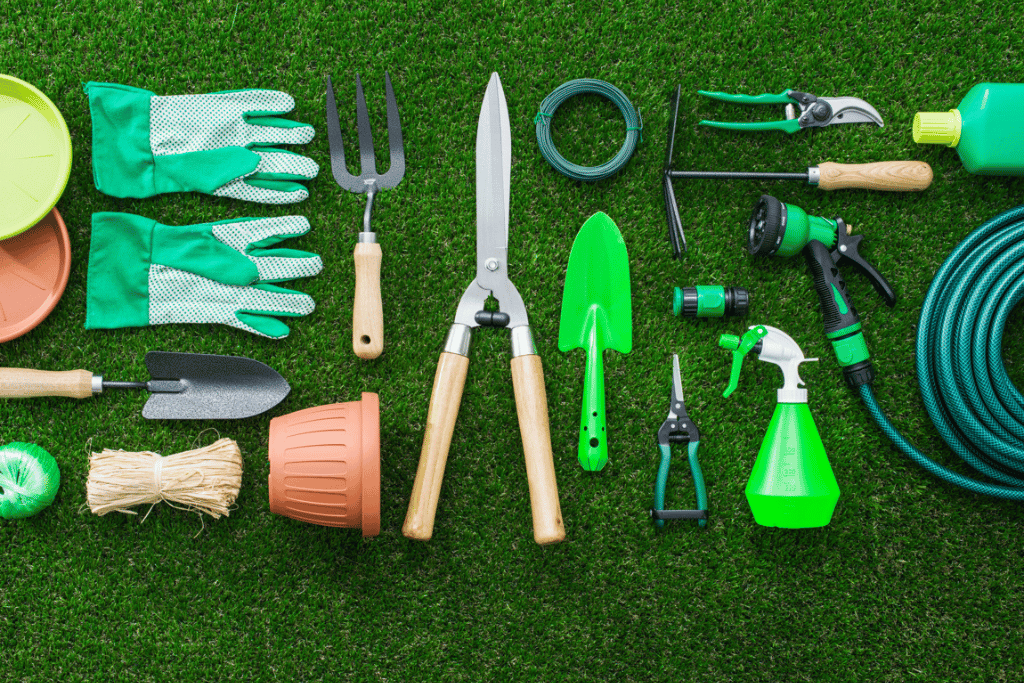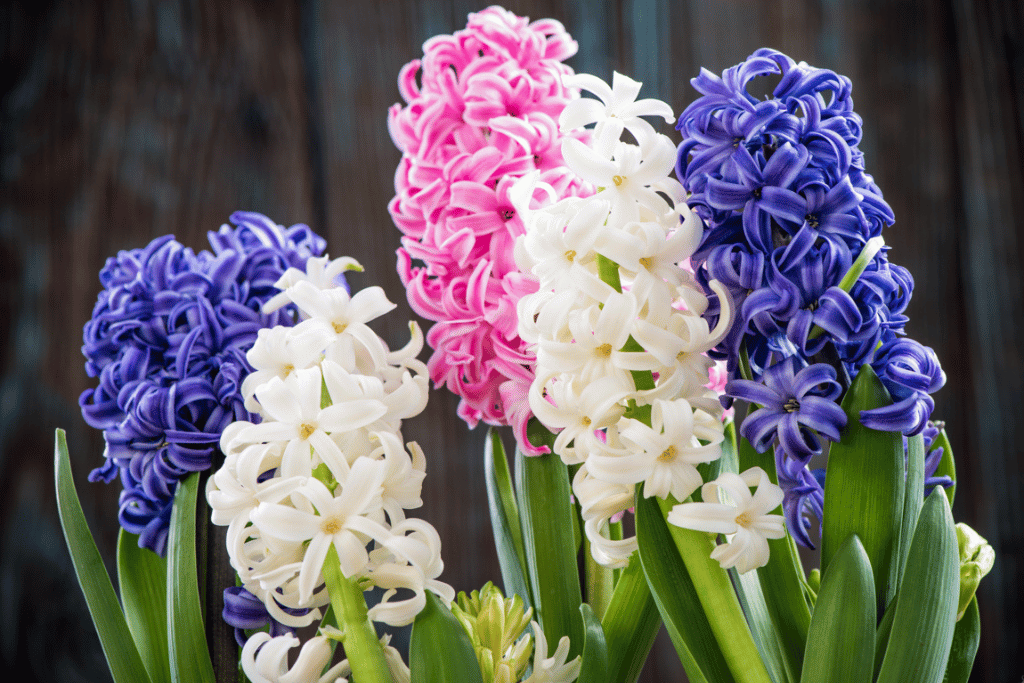
Whether you’re looking to add some tropical vibes to your home decor or are just simply bored of the same old house plants that seem to be everywhere, look no further than houseplants that look like palm trees! These leafy greens not only add a touch of paradise to your room, but they are also easy to care for and improve air quality.
This article will transport you straight to paradise by covering various palms, tips on growing them, and how they look like palm trees.
So, get ready to ditch the boring and embrace the exotic as we’re about to show you some plants that will make your home feel like a beach vacation.
Palm it Up with the Majesty Palm

The Majesty palm is a true royalty among house plants! With its long feathery fronds and tall, slender trunk, this plant is the perfect way to bring a touch of the tropics into your home. It’s no wonder the Majesty palm has made its way into so many houses worldwide. It is visually striking and easy to care for, as it can thrive in many environments. Plus, with its impressive height (it can grow up to 10 feet (300cm) tall), it’s sure to make a statement in any room.
Now let’s have a look at how to keep your Majesty palm happy and healthy.
This plant loves to steal the spotlight – but on its own terms! Majesty palm prefers bright indirect light, so keep it near a window with plenty of sun. But beware not to expose it to direct sunlight as it can burn the leaves.
Next up, Watering. This house plant that looks like a palm tree loves to be kept consistently moist but not soaking wet. You have to find the perfect balance between drowning it and neglecting it! Don’t panic though; an excellent way to check is by feeling the top inch of the soil.
If your finger comes out clean, then the soil is dry, and the Majesty palm needs a drink. This palm has a hefty root system, so make sure you give it a good drink to get it all the way down the pot.
When it comes to temperature and humidity, fear not, the Majesty palm likes to be kept in the same temperatures that we are comfortable in, 65-80F (18-27C). Avoid positioning the Pal in a place where there are heat sources of drafts. As with humidity, the Majesty palm thrives in a range of 50-60%. You can install a humidifier or water tray near your home that is dryer than the average.
Areca Palms: The Houseplants That Look Like Palm Trees

Suppose you’re looking for a houseplant that will make you feel like you’re sitting on a beach, then look no further than the Areca Palm! This plant is a real show stopper with its graceful fronds and slender trunk. Also known as the Butterfly Palm or Golden Cane Palm, its native to Madagascar and is commonly found in tropical regions around the world. It’s a popular houseplant thanks to its easy-care nature and ability to purify the air.
This house plant that looks like a palm tree loves bright indirect light, so you can place it near a window that gets plenty of sunshine but avoid direct sunlight that can scorch the leaves. If your home receives a lot of natural light, you can use a drape or sheer curtain to diffuse it. One sign of too much light is that the leaves will start to turn yellow, so move it to a shadier spot if you see this happening.
When it comes to watering, the Areca palm likes to stay consistently moist but not soggy. Water it when the top inch of the soil feels dry to the touch. Ensure you use a pot with drainage holes to avoid waterlogging the roots. Like most plants, underwatering is better than overwatering, so don’t go overboard with the watering can!
Consider placing the Areca palm in a naturally humid environment in your home, like the kitchen, bathroom, or laundry. These palms prefer a humidity of 50-60%, which is slightly higher than the average household but not unachievable. No stress- you don’t need to create a sauna for it to be happy!
Temperatures between 60-75F (15-24C) are perfect for the Areca palm. Avoid exposure to temperatures below 55F (13C) as it will cause the plant stress and slow down its growth.
Get Exotic with the Kentia Palm

A classic choice for houseplant enthusiasts and interior decorators alike. This tropical beauty is known for its graceful foliage reaching up to 6 feet (182cm) in length. The leaves are a rich deep green and arranged in a symmetrical arching pattern. When you look at the Kentia palm, you can’t help but feel a sense of relaxation and tranquility – similar to the feeling of a tropical oasis!
One of the significant aspects of the Kentia palm is that it can tolerate low light conditions, but it does best in bright indirect sunlight. So, if you have a room with a lot of natural light, no worries; you can use a sheer curtain on the window to filter it.
When it comes to watering the Kentia palm, an excellent way to check is by feeling the top inch of the soil to see if it’s dry. Depending on the conditions of your home, you may water it once a week. You can let the soil dry out between waterings, but avoid letting it become too dry, as this can make the soil become hydrophobic, making it difficult to absorb the water again later on. It’s always best to underwater than overwater – nobody likes a soggy palm!
Let’s talk about the temperature and humidity. The Kentia Palm is pretty easygoing when it comes to temperature- it can tolerate a range of temperatures between 55-85F (13-29C). However, it doesn’t like sudden temperature changes, so avoid placing it near an entryway or window that is opened frequently. As for humidity, the Kentia Palm likes moderate to high humidity. If you live in a dry climate, you can mist the leaves or run a humidifier to control the levels.
A little extra tip with the Kentia Palm- it likes to have its leaves wiped down occasionally to remove any dust and keep it looking shiny and healthy. Think of it like a spa day for your palm!
Small but Mighty: The Parlour Palm

This is one of the small houseplants that look like palm trees and is perfect for adding a touch of elegance to any room. Although this is a slow-growing plant, it can reach a height of 2-6 feet (60-1800cm) when fully mature. With its delicate feathery leaves that give it a soft appearance, it will make you feel like you have your very own zen garden in the home.
When it comes to caring for the Parlour palm, its delicate looks are deceiving. The Parlour palm is a hardy little plant that’s relatively easy to care for.
Here are a few things to keep in mind:
Firstly, the light requirements aim for low to medium light conditions, so somewhere away from a window that receives 6-8 hours of direct sunlight daily. Inadequate lighting won’t harm the Parlour palm, but it may grow more stretched and leggier and obviously grow a lot slower than average.
Next up is the watering regime. Try to keep the Parlour palm consistently moist but not soaking wet. Check the soil weekly for moisture content by using a moisture meter or sticking your finger into the soil. If you insert your finger into the second knuckle and it comes out clean, your Parlour palm needs a drink!
Another critical aspect to consider with the Parlour palm is the temperature and humidity. These houseplants that look like mini palm trees prefer moderate temperatures and humidity. With a tolerance range of 60-80F (15-27C), keeping them in your home is not a challenge. Keep in mind the areas in your home where the temperature fluctuates rapidly, such as entryways or drafty windows. These areas confuse the Parlour palm and can cause stress.
As for humidity- moderate to high humidity is best around 50-60%. You can measure the moisture in your home using a digital thermometer which is available online or from a local gardening store. If you live in a dry climate, consider grouping your plants together to create a mini rainforest-like environment. That way, they will keep the moisture around each other and stay happy!
Get Sassy with Sago Palm

The Sago Palm is a pre-historic-looking palm that could transport you back to dinosaur times!
The Sago palm is not actually a palm but rather a cycad- a type of primitive plant that has been around since the time of dinosaurs. It has a stout woody trunk and crown of feathery fern-like fronds that emerge from the top. The fronds are glossy deep green in color and can grow up to 3-4 feet (90-1200cm). The Sago palm is a resilient plant, but it does have some specific needs to keep in mind.
First of all, the light requirements. The Sago palm likes bright indirect light but can also tolerate some direct sunlight. If you have a bright sunny spot in your home, that’s the perfect place for it. In some regions, the Sago palms make excellent outside houseplants that look like palm trees. They look great planted in pots next to the swimming pool.
Next is the watering of the Sago palms. They are very drought tolerant and can go for long periods without water, but they do best when the soil is kept consistently moist. Water it thoroughly when the soil is dry to the touch, and then allow the soil to dry out a little before watering again. Overwatering can be a problem, so avoid drowning it, which can cause fatal root rot.
Moving on to the temperature and humidity details. These exotic plants like warm temperatures and high humidity but tolerate lower ranges. Ideally, they should be kept in temperatures between 65-80F (18-27C) with humidity levels around 50-60%. In drier conditions like winter, you can try misting the fronds with a spray water bottle to keep the moisture in the immediate area.
And finally, a little extra care tip – The Sago palm is a slow-growing palm, so it may look like nothing is happening with this little beauty- but be patient; they do grow with the proper care. You can give it little boots of fertilizer twice a year using a balanced slow-release fertilizer.
Liven up your home with the Lady Palm

The unique compact appearance of the Lady palm is an excellent choice for those wishing to add a touch of the tropics to their home or office. Also known as Rhapis excelsa this fan-shaped palm is originally from Southeast Asia and is characterized by its deep green fronds that grow in clusters around the trunk. The Lady palm is a small house plant that looks like a palm tree and showcases dense, lush foliage adding a tropical look to any space. Lady palms are slow growing and can reach up to 6 feet (1800cm) after many years when fully matured.
Let’s have a look at how to care for this hardy plant.
Regarding lighting, the Lady palms favor a bright, indirect light like other houseplants. But they can also tolerate lower light conditions. If you notice the fonds turning yellow or brown, it could be a sign that the plant is getting too much light. Contrary to that, if the plant has started to grow leggy or in a specific direction, there could be insufficient light.
Next up is watering. These mini palm trees don’t like standing in water because their fragile root system is susceptible to root rot. Try to keep the soil consistently moist and only water when the top inch (2.5cm) of the soil dry to the touch. After watering, allow the excess water to escape the drainage holes for 10 minutes before putting it back on its tray.
Moving on to the temperature and humidity requirements. Lady palms prefer temperatures around 60-80F (15-27C) and can tolerate temperatures as low as 50F (10C). When it comes to winter, if your house drops below these temperatures, you may need to make some adjustments.
As far as humidity (50-60%) is concerned, they are happy with the same levels as humans, so there’s no need to make any major adjustments to your home. If you live in a super dry climate and need to adjust the humidity, you can run a small, inexpensive humidifier or use a pebble tray with a small amount of water under the plant pot to keep the area moist.
A little extra tip: Lady’s palms are fairly low maintenance, but they do appreciate an occasional dusting down or wiping off their fronds. You can use a damp cloth to do this, which will keep them looking their best!
Add a Little Bit of Paradise to Your Daily Life
It’s never been easier to add some beachy vibes to your home with a variety of options to choose from and easy-care instructions.
Whether you’re a newbie plant parent or a Jungle Jedi with the proper care routine and understanding of these house plants that look like palm trees, you can enjoy the lush tropical look without ever leaving your living room!
Ready to Transform your Home into a Tropical Paradise?
If you are looking for more fun insight on plants that create a mini-indoor oasis, head over to our indoor plants page for more. Our website is jam-packed with all the tools to get you started on your plant-growing journey.



